-

 Little Lord Fauntleroy by Frances Hodgson Burnett (The Secret Garden; A Little Princess) is a beloved children's novel that made a huge impact on the 19th century public, shaping everything from boys' clothing fashions to copyright law. Cedric Errol is a generous, kind, and exemplary middle-class American boy who is suddenly found to be the heir of the Earl of Dorincourt. Saying loving goodbyes to his working-class friends, Cedric goes to England together with his mother to embrace his new fortune. His grandfather, the old earl, is a bitter old man ridden with gout and a foul temper, trusting no one. However the angelic boy elicits a profound transformation in the grandfather, which not only benefits the castle household but the whole populace of the earldom. If only the old man's heart would soften toward Cedric's estranged mother, the family would be healed at last. And when another potential heir to the earldom makes a claim, it seems that everything is lost.... But all things are possible through a child's innocent trust, true friendship, and unconditional love.
Little Lord Fauntleroy by Frances Hodgson Burnett (The Secret Garden; A Little Princess) is a beloved children's novel that made a huge impact on the 19th century public, shaping everything from boys' clothing fashions to copyright law. Cedric Errol is a generous, kind, and exemplary middle-class American boy who is suddenly found to be the heir of the Earl of Dorincourt. Saying loving goodbyes to his working-class friends, Cedric goes to England together with his mother to embrace his new fortune. His grandfather, the old earl, is a bitter old man ridden with gout and a foul temper, trusting no one. However the angelic boy elicits a profound transformation in the grandfather, which not only benefits the castle household but the whole populace of the earldom. If only the old man's heart would soften toward Cedric's estranged mother, the family would be healed at last. And when another potential heir to the earldom makes a claim, it seems that everything is lost.... But all things are possible through a child's innocent trust, true friendship, and unconditional love. -
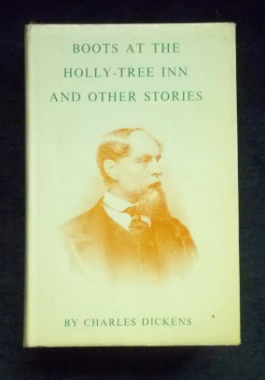 First published by Charles Dickens in 1855, Boots at the Holly-Tree Inn is the story of a traveller who finds himself snowed in for a week at the Holly-Tree Inn – so he entertains himself by recording the stories he hears from the other lodgers and staff. In this volume: Boots At The Holy Tree Inn; Doctor Marigold’s Prescriptions: To Be Taken Immediately; Not To Be Taken At Bedtime; To Be Taken At The Dinner Table; Not To Be Taken For Granted; To Be Taken In Water; To Be Taken With A Grain Of Salt; To Be Taken And Tried; To Be Taken For Life. The First Poor Traveller’s Story; Mrs Lirriper’s Lodgings: How Mrs Lirriper Carried On The Business; How The First Floor Went To Crowley Castle; How The Side-Room Was Attended By A Doctor; How The Second Floor Kept A Dog; How The Third Floor Knew The Potteries; How The Best Attic Was Under A Cloud; How The Parlours Added A Few Words. Mrs Lirriper’s Legacy: Mrs Lirriper Relates How She Went On And Went Over; A Past Lodger Relates A Wild Story Of A Doctor; Another Past Lodger Relates His Experience As A Poor Relation; Another Past Lodger Relates What Lot He Drew At Glumper House; Another Past Lodger Relates His Own Ghost Story; Another Past Lodger Relates Certain Passages To Her Husband; Mrs Lirriper Relates How Jemmy Topped Up.
First published by Charles Dickens in 1855, Boots at the Holly-Tree Inn is the story of a traveller who finds himself snowed in for a week at the Holly-Tree Inn – so he entertains himself by recording the stories he hears from the other lodgers and staff. In this volume: Boots At The Holy Tree Inn; Doctor Marigold’s Prescriptions: To Be Taken Immediately; Not To Be Taken At Bedtime; To Be Taken At The Dinner Table; Not To Be Taken For Granted; To Be Taken In Water; To Be Taken With A Grain Of Salt; To Be Taken And Tried; To Be Taken For Life. The First Poor Traveller’s Story; Mrs Lirriper’s Lodgings: How Mrs Lirriper Carried On The Business; How The First Floor Went To Crowley Castle; How The Side-Room Was Attended By A Doctor; How The Second Floor Kept A Dog; How The Third Floor Knew The Potteries; How The Best Attic Was Under A Cloud; How The Parlours Added A Few Words. Mrs Lirriper’s Legacy: Mrs Lirriper Relates How She Went On And Went Over; A Past Lodger Relates A Wild Story Of A Doctor; Another Past Lodger Relates His Experience As A Poor Relation; Another Past Lodger Relates What Lot He Drew At Glumper House; Another Past Lodger Relates His Own Ghost Story; Another Past Lodger Relates Certain Passages To Her Husband; Mrs Lirriper Relates How Jemmy Topped Up. -

Devil Water: Anya Seton
$15.00Set during the Jacobite uprising of 1715. James, Earl of Derwentwater loses his life for his espousal of the cause; his brother Charles is the last Englishman to die for the Jacobites. Charles, a Catholic nobleman who joined the short-lived Jacobite rebellion of 1715, had a daughter, Jenny, by a secret marriage. Set in the Northumbrian wilds, teeming London, and colonial Virginia - where Jenny eventually settled on the estate of the famous William Byrd of Westover - Jenny’s story reveals one young woman’s loyalty, passion and courage as she struggles in a life divided between the Old World and the New. Anya Seton writes a well-researched, good story every time. -
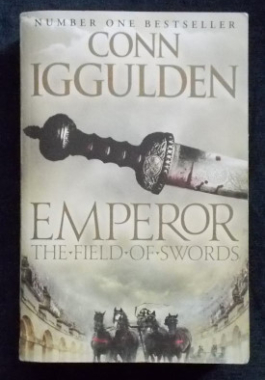 Book III of Emperor. Julius Caesar has taken his legions north to battle the Gallic tribes. But as his successes mount, overwhelming ambition and new alliances begin to threaten his one true friendship. Marcus Brutus was instrumental in the conquest of Gaul and so in restoring Caesar’s reputation as a hero of Rome. But after decades standing side by side, will they choose to cross the Rubicon together? Are they both willing to take the fight to Rome herself?
Book III of Emperor. Julius Caesar has taken his legions north to battle the Gallic tribes. But as his successes mount, overwhelming ambition and new alliances begin to threaten his one true friendship. Marcus Brutus was instrumental in the conquest of Gaul and so in restoring Caesar’s reputation as a hero of Rome. But after decades standing side by side, will they choose to cross the Rubicon together? Are they both willing to take the fight to Rome herself? -
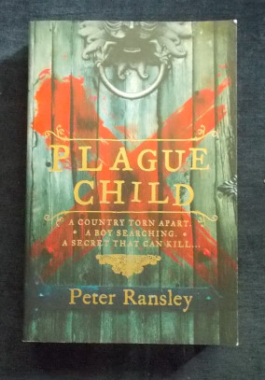
Plague Child: Peter Ransley
$10.00Tom Neave 1. September 1625: Plague cart driver, Matthew Kneave, is sent to pick up the corpse of a baby. Yet, on the way to the plague pit, he hears a cry – the baby is alive. A plague child himself, and now immune from the disease, Matthew decides to raise it as his own. Fifteen years on, Matthew’s son Tom is apprenticed to a printer in the City. Somebody is interested in him and is keen to turn him into a gentleman. He is even given an education. But Tom is unaware that he has a benefactor and soon he discovers that someone else is determined to kill him. The civil war divides families, yet Tom is divided in himself. Devil or saint? Royalist or radical? He is at the bottom of the social ladder, yet soon finds himself within reach of a great estate – one which he must give up to be with the girl he loves. -

A Man In Full: Tom Wolfe
$12.00Atlanta, Georgia - a racially mixed, late-century boomtown full of fresh wealth and wily politicians. The protagonist is Charles Croker, once a college football star, now a late-middle-aged Atlanta conglomerate king whose outsize ego has at last hit up against reality. Charlie has a 29,000 acre quail-shooting plantation, a young and demanding second wife, and a half-empty office complex with a staggering load of debt. Meanwhile, Conrad Hensley, idealistic young father of two, is laid off from his job at the Croker Global Foods warehouse near Oakland and finds himself spiraling into the lower depths of the American legal system. And back in Atlanta, when star Georgia Tech running back Fareek “the Canon” Fanon, a homegrown product of the city’s slums, is accused of date-raping the daughter of a pillar of the white establishment, upscale black lawyer Roger White II is asked to represent Fanon and help keep the city’s delicate racial balance from blowing sky-high. -
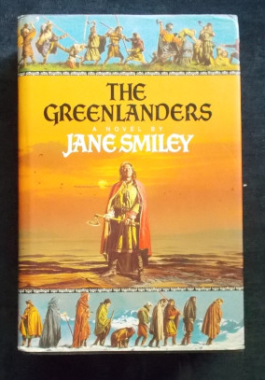 Set in the fourteenth century in Europe’s most far-flung outpost, a land of glittering fjords, blasting winds, sun-warmed meadows, and high, dark mountains, this is the story of one family – proud landowner Asgeir Gunnarsson; his daughter Margret, whose willful independence leads her into passionate adultery and exile; and his son Gunnar, whose quest for knowledge is at the compelling center of this unforgettable book. It’s a trip into a world of farmers, priests and lawspeakers; of hunts and feasts and long-standing feuds; a grand tale of a remote time, place and people made real by literary magic. Cover art by Kevin Twedell.
Set in the fourteenth century in Europe’s most far-flung outpost, a land of glittering fjords, blasting winds, sun-warmed meadows, and high, dark mountains, this is the story of one family – proud landowner Asgeir Gunnarsson; his daughter Margret, whose willful independence leads her into passionate adultery and exile; and his son Gunnar, whose quest for knowledge is at the compelling center of this unforgettable book. It’s a trip into a world of farmers, priests and lawspeakers; of hunts and feasts and long-standing feuds; a grand tale of a remote time, place and people made real by literary magic. Cover art by Kevin Twedell. -
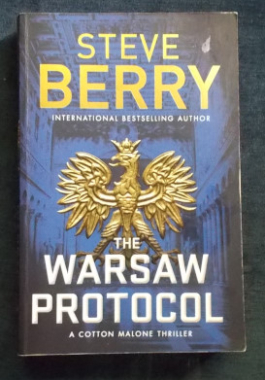 Cotton Malone 15. One by one the seven precious relics of the Arma Christi, the weapons of Christ, are disappearing from sanctuaries across the world. After former Justice Department agent Cotton Malone witnesses the theft of one of them, he learns from his old boss, Stephanie Nelle, that a private auction is about to be held where incriminating information on the president of Poland will be offered to the highest bidder - blackmail that both the United States and Russia want, but for vastly different reasons. The price of admission to that auction is one of the relics, so Malone is first sent to a castle in Poland to steal the Holy Lance, a thousand-year-old spear sacred to not only Christians but to the Polish people, and then on to the auction itself. But nothing goes as planned and Malone is thrust into a bloody battle between three nations over a secret that, if exposed, could change the balance of power in Europe. From the tranquil canals of Bruges, to the elegant rooms of Wawel Castle, to the ancient salt mines deep beneath the earth outside Krakow, Malone is caught in the middle of a deadly war - the outcome of which turns on something known as the Warsaw Protocol.
Cotton Malone 15. One by one the seven precious relics of the Arma Christi, the weapons of Christ, are disappearing from sanctuaries across the world. After former Justice Department agent Cotton Malone witnesses the theft of one of them, he learns from his old boss, Stephanie Nelle, that a private auction is about to be held where incriminating information on the president of Poland will be offered to the highest bidder - blackmail that both the United States and Russia want, but for vastly different reasons. The price of admission to that auction is one of the relics, so Malone is first sent to a castle in Poland to steal the Holy Lance, a thousand-year-old spear sacred to not only Christians but to the Polish people, and then on to the auction itself. But nothing goes as planned and Malone is thrust into a bloody battle between three nations over a secret that, if exposed, could change the balance of power in Europe. From the tranquil canals of Bruges, to the elegant rooms of Wawel Castle, to the ancient salt mines deep beneath the earth outside Krakow, Malone is caught in the middle of a deadly war - the outcome of which turns on something known as the Warsaw Protocol.




